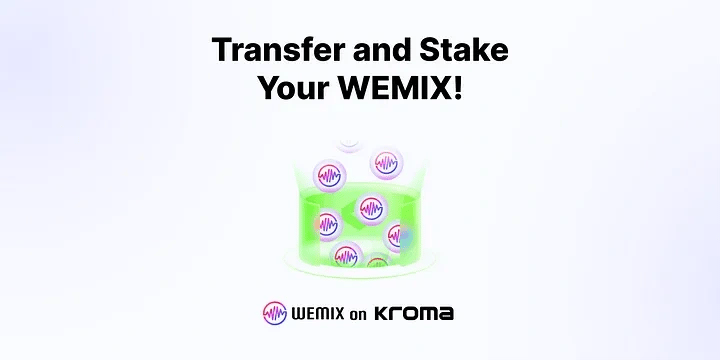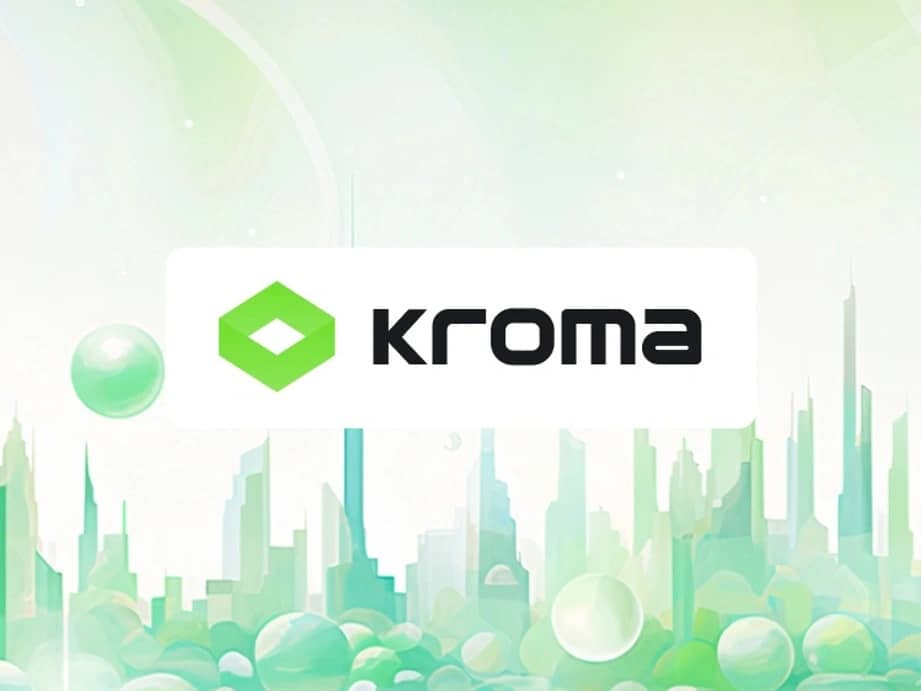위키 구독하기
Share wiki
Bookmark
Kroma
Kroma
**크로마(Kroma)**는 이더리움 레이어 2 옵티미스틱 롤업으로, ZK 폴트 프루프를 활용하여 개발자 친화적인 환경을 제공하는 동시에 EVM과 동등한 수준의 저렴한 수수료와 확장성을 제공하도록 설계되었습니다.[1] WEMIX 재단의 자회사인 Lightscale Holdings Pte. Ltd.가 크로마 프로젝트를 개발하고 있습니다.[5]
개요
2023년 4월에 개발된 크로마는 ZK 폴트 프루프를 사용하는 옵티미스틱 롤업으로, Scroll에서 파생된 zkEVM을 사용합니다. 사용자 친화적이고 기능적인 L2 환경을 개발하고 있습니다. 효율적인 개발을 위해 주요 블록체인 프로젝트의 오픈 소스 코드를 사용하며, 커뮤니티 협력과 지속적인 업데이트의 중요성을 강조합니다. 이더리움의 확장성 문제를 넘어 L2의 발전에 기여하기 위해 기술적 복잡성을 해결하고 고품질의 안정적인 제품을 제공하는 것을 목표로 합니다.[1][2]
크로마는 옵티미스틱 롤업과 ZK 롤업의 장점을 결합하고 한계를 완화하는 것을 목표로 합니다. zkEVM이 실제 사용을 위해 계속 성장하는 동안, 크로마는 옵티미스틱 롤업에서 EVM과 동등한 ZK 롤업으로 전환하는 2단계 접근 방식을 통해 발전할 계획입니다. 폴트 프루프에 zkEVM을 사용하고 옵티미스틱 롤업 단계의 zk 친화적인 구성 요소를 통합하여 네트워크 변경 없이 점진적인 마이그레이션을 가능하게 합니다. [1][2]
기술
타키온(Tachyon)
타키온(Tachyon)은 크로마 팀이 설계한 하드웨어 가속 솔루션으로, GPU를 활용하여 증명 생성 프로세스를 간소화하도록 설계되었습니다. 수학적 정확성과 다양성을 강조하는 범용 ZK 오픈 소스 라이브러리입니다. 다양한 언어와 런타임을 지원하는 타키온은 개발 워크플로를 간소화하고 ZK 기술 환경의 기반 플랫폼으로 자리매김하는 것을 목표로 합니다. [3]
타키온은 CPU 및 GPU 플랫폼에서 최적의 성능을 우선시합니다. 범용 설계를 통해 개발자는 최소한의 노력으로 다양한 증명 방식을 적용할 수 있어 생산성이 향상됩니다. 타키온은 수학적 아키텍처와 직관적인 상속 시스템을 엄격하게 준수하여 확장성을 보장하고 코드 중복을 줄이며 신뢰성과 효율성을 향상시킵니다. [3]
C++로 구현된 타키온은 GPU 중심 산업의 요구 사항에 맞춰 고성능 컴퓨팅 작업에 필수적인 최적의 GPU 상호 운용성을 제공합니다. 다양한 프로그래밍 언어와 런타임에 대한 편리한 바인딩을 제공하여 다양한 개발 환경에 원활하게 통합될 수 있도록 패키징을 우선시합니다. [3]
크로마(Kroma)의 WEMIX

2023년 12월에 도입된 크로마(Kroma)의 WEMIX는 WEMIX 코인을 위한 크로스체인 스테이킹 프로토콜입니다. 크로마가 제공하는 레이어 2 기술을 통해 WEMIX3.0 사용자가 이더리움 생태계를 탐색할 수 있도록 지원합니다. 이 통합을 통해 WEMIX3.0 네트워크와 크로마 네트워크 간의 WEMIX 코인을 원활하게 전송할 수 있습니다. 또한 사용자는 크로마에서 WEMIX.e 토큰을 스테이킹하여 stWEMIX.e 토큰을 얻을 수 있으며, 이를 통해 WEMIX.e 및 WEMIX 커뮤니티 포인트 보유량을 늘릴 수 있습니다. 사용자는 나중에 이 포인트를 KRO 토큰으로 교환할 수 있습니다. [4]
크로마 가디언 하우스(KGH)
크로마 가디언 하우스(KGH)는 크로마 밸리데이터 네트워크 참여를 민주화하기 위해 설계된 NFT 컬렉션입니다. 크로마는 데이터 무결성과 보안을 위해 밸리데이터에 의존합니다. 그러나 이 네트워크에 적극적으로 참여하려면 일반적으로 고급 소프트웨어 개발 기술이 필요하여 일반 대중의 접근성이 제한됩니다. KGH NFT는 프로그래밍 전문 지식이 없는 개인도 크로마의 보안에 기여할 수 있도록 이 문제를 해결합니다. KGH NFT를 소유함으로써 소유자는 네트워크 보안과 밸리데이터 성능에 간접적으로 영향을 미칠 수 있습니다. [5]
KGH NFT 소유자는 선택한 밸리데이터에게 NFT를 스테이킹하여 해당 밸리데이터를 지지하고 잠재적인 보상을 높일 수 있습니다. 이러한 설정은 NFT 소유자와 밸리데이터 간의 상호 이익 관계를 조성합니다. 밸리데이터의 경우 스테이킹 증가는 더 높은 보상으로 이어져 정직하고 적극적인 참여를 유도합니다. 한편, 성공적인 밸리데이터와 함께 스테이킹하는 NFT 소유자는 일부 보상을 받아 수동적 수입원을 창출합니다. [5]
KRO 토큰
KRO는 크로마 네트워크의 기본 토큰입니다. 그 설계는 네트워크의 성장과 가치가 일치하도록 보장합니다. 이러한 가치는 제로-스타트 분배와 네트워크 확장과의 동기화를 가능하게 하는 메커니즘을 통해 달성됩니다. [6]
잘못된 내용이 있나요?
